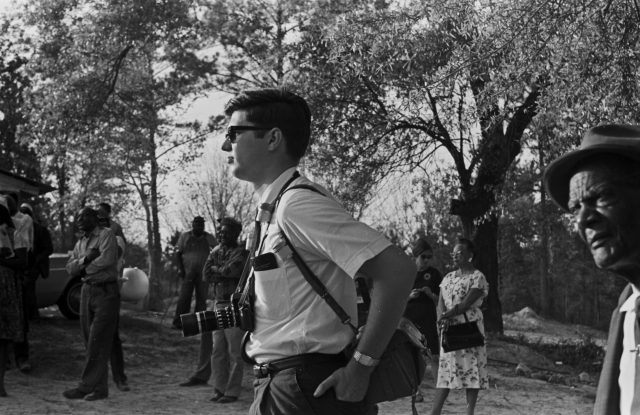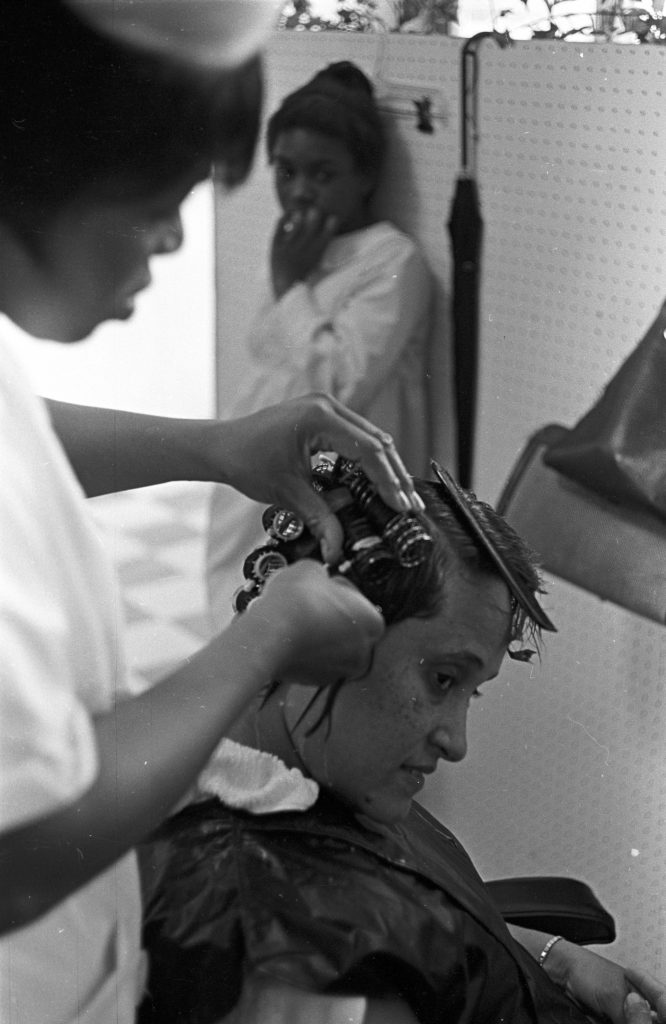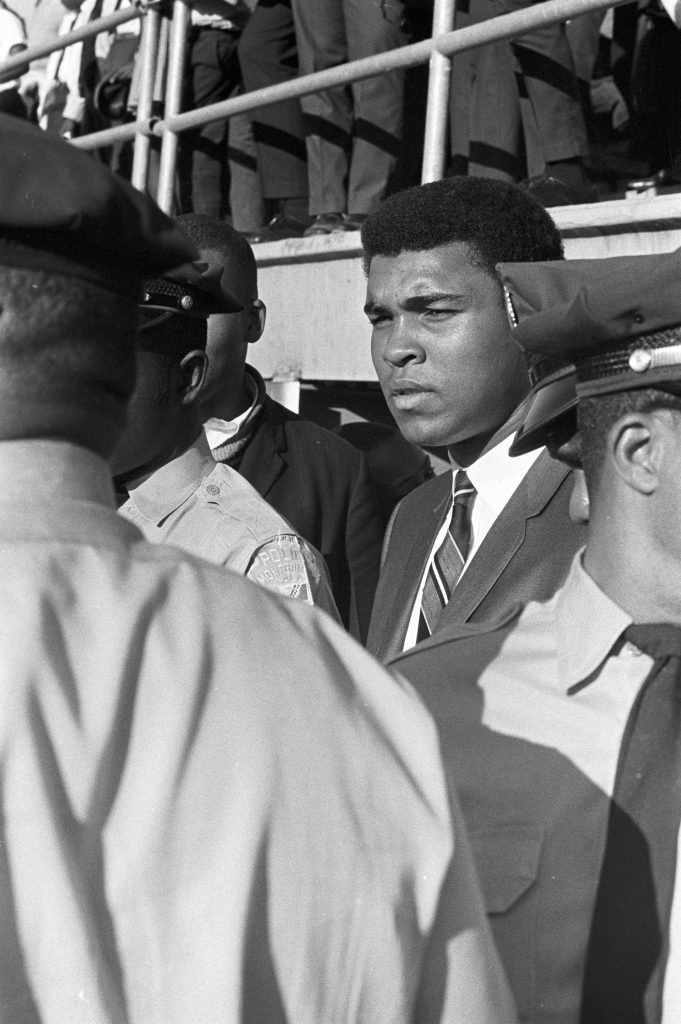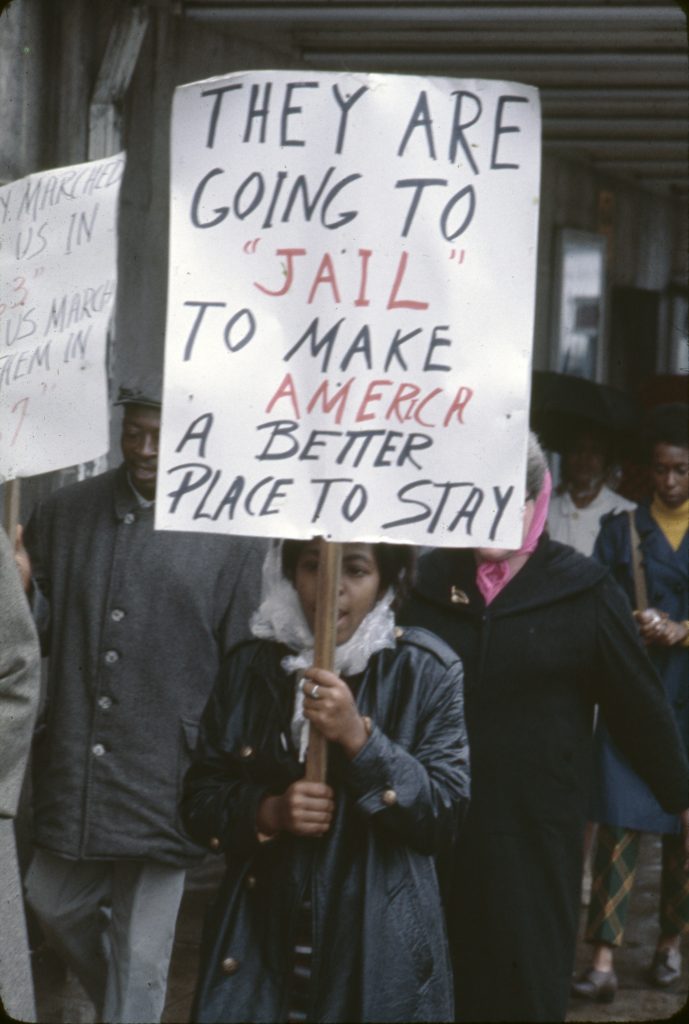
By Ryan Michaels
The Birmingham Times
Few have chronicled Alabama history the way Jim Peppler has.
The photographer was on the ground during the mid-1960s for the Southern Courier, a Montgomery, Alabama-based weekly newspaper founded by Harvard University students to cover the Civil Rights Movement and people of color, both of which had largely been ignored throughout the South and rest of the nation.
Thousands of Peppler’s photos are housed in his own collection at the Alabama Department of Archives and History in Montgomery, and they include numerous images of Civil Rights leaders during the height of the struggle—the Rev. Dr. Martin Luther King Jr., the Rev. Fred L. Shuttlesworth, and the Rev. Hosea Williams, among others; politicians, entertainers, and musicians—B.B. King, the Marvelettes, and many more; and just everyday residents, some gathered in beauty salons and others marching for their rights.
Peppler’s work at the Courier, which was published for three and a half years at a critical time in the transformation of Southern society, is part of Black history—but he and his work are seldom talked about.
The Birmingham Times spent nearly a week talking to the retired Peppler, who now lives in Saugerties, New York. The phone conversations and email exchanges covered topics ranging from some of the dangers he faced while taking more than 11,000 photographs during the mid-1960s to the friendships he formed with some of his subjects.
‘Arrested’
Like many of the figures he covered for the newspaper, Peppler was arrested during a Civil Rights protest.
One day in Crenshaw County, which is just south of the Montgomery metropolitan area, Peppler was attending a demonstration led by Roosevelt Barnett, a Civil Rights leader who focused his efforts in Montgomery. Barnett was also part of the then-Dr. King-led Southern Christian Leadership Conference (SCLC), one of the primary organizing groups during the Civil Rights Movement.
When demonstrators didn’t show up at Barnett’s rally, some deputy sheriffs did, recalled Peppler, who was arrested and taken to a Luverne, Alabama, jail cell. While there, he was separated from the rest of the inmates.
“There were a couple of other inmates, but they were all at the front of the jail. There was nobody in my area, and they just left me there,” Peppler said. “At some point, they brought me some food [that looked so horrible] I didn’t eat it.”
At least one person saw what happened and called Barnett. Barnett called Mike Lottman, an editor at the Courier, about Peppler’s arrest. Lottman then called the sheriff, who said they had no Peppler under arrest.
Lottman then called John Doare, someone he knew at the U.S. Department of Justice. Doare called the sheriff, who repeated his story that his officers had not arrested Peppler.
When Doare threatened to have federal agents investigate the matter, the sheriff decided to release Peppler.
“In the middle of the night, [Lottman] drives down to Luverne, and they let me out of the jail,” the photographer recalled. “I get in his car, we head back to Montgomery, and then, of course, [the police] were caught in a dilemma of figuring out how to explain why I was in jail.”
Peppler received a misdemeanor trespassing charge, and he is just happy that he made it out with his life. Peppler, who is white, said Barnett, who is Black, looked out for him—and that may have saved Peppler’s life.
“To this day, I am alive, literally, because somebody called Roosevelt Barnett. And Roosevelt, bless his heart, called [my editor] because we did what we could to look after each other, whatever the circumstance,” Peppler said.
Getting His Start
Peppler, now 80, grew up in South Philadelphia, Pennsylvania, and was among the many young northerners who headed South between 1965 and 1968 to cover the Civil Rights Movement. He eventually became the photo editor and primary photographer for the Southern Courier.
As a Pennsylvania State University (PSU) graduate, Peppler didn’t have many prospects in 1965. He was a good journalism student, but he wanted to take pictures and support his wife, Amy, and daughter, Robin.
Peppler worked a variety of odd jobs, including assisting professors at PSU, until one of his academic advisors told him about a newspaper that a couple of Harvard University students had started in Montgomery, Alabama. After hearing Dr. King speak at PSU, and after hearing other stories of the Freedom Summer voter registration drive in Mississippi, Peppler wanted to be involved in the Civil Rights Movement but didn’t feel he had the personality to be a participant. “I’m a shy person,” he said. “I’m not going to … wave signs.”
Photography helped Peppler deal with shyness, he said: “Nobody tries to spark up a conversation with you while you have a camera covering your face.”
“The whole idea of having this camera to look through, something that I shove in front of my face, while looking with that interest in everybody in the whole universe, … this was a way of opening up to look at [things] but be behind the camera and be accepted.”
Once in Alabama, Peppler learned that the Courier’s founders intended for the newspaper to be handed over to local residents.
“The dilemma that the Courier found was that local people, especially local professional people, ran a risk,” Peppler said. “They got involved with the Courier, their names got out there, and their families were in jeopardy of retaliation.”
Other Southern newspapers at the time did not closely cover the Civil Rights marches, which sought to end segregation and bring about equality during a time of racial strife in the country, particularly in the South. Those newspapers also usually relegated coverage of Black people to small sections at the backs of papers, focusing only on topics like marriages and deaths, Peppler said.
Though the Courier faced several obstacles, the newspaper did find some local support. For instance, W. Paul Woolley published the Courier through his Southeastern Publishing Company in Montgomery.
“There were points when [Woolley] was essentially threatened because people didn’t like what the Courier was doing, and he stood by it,” Peppler said.
Dicey Situations
Peppler got himself into numerous dicey situations, particularly with Alabama police. His cameras were confiscated, and he was arrested and even beaten by police.
After Black Power leader Stokely Carmichael, known in later years as Kwame Ture, finished speaking at an event in Prattville, Alabama, Peppler and the activist shared a warm moment, during which Carmichael threw his arm around the photographer. Shortly thereafter, the police arrived to arrest Carmichael. As Peppler started taking pictures of the incident, the police threw Peppler down and took his cameras.
Peppler then drove his Volkswagen Beetle, the standard issue for Courier reporters, back to Montgomery to get another camera and returned to the police department in Prattville. While Peppler waited in his car with another Courier reporter, who wouldn’t let Peppler go alone, a man approached the car, beat on the window, and shouted to Peppler, “Are you that n——loving, son-of-a-b—-, Communist agitator that comes down here starting problems?”
Peppler responded, “No, that’s not me.”
After some back-and-forth between the man who beat on Peppler’s window and police officers at the station, the police figured out that Peppler was the person they were talking about. So, the man that approached Peppler started beating him. “Boom, boom, boom, boom! Just pounding away on me,” Peppler recalled.
The other officers eventually called off the man who was beating Peppler, who then went directly into the police station to get his cameras.
“I’m a very focused, autism-syndrome-focus kind of a guy, and I walk in [covered with] blood, you know, and [the police chief said], ‘What happened to you?’ … [I said], ‘Oh, you know, [a cop] beat me up out there.’”
After some discussion between the chief and other police, the chief figured out which officer Peppler was talking about. “Oh, yeah. Well, he’s under arrest,” Peppler recalled the chief saying.
“He was sitting out there, laughing with the cops, under arrest,” Peppler said.
1968
Peppler remembers 1968 as a pivotal year for two reasons: the assassination of Dr. King and the last year of publication for the Southern Courier. When news came over the radio about King’s death, Peppler was riding in a car with another Courier employee.
“We just pulled over and started crying,” the photographer remembered. “It changed a lot. It changed an empowerment within us.”
Hearing Dr. King speak at PSU years before was a significant part of what excited Peppler about the Civil Rights Movement. Dr. King was a source of hope, and after Dr. King’s death Peppler “lost heart” being at the Courier.
“I didn’t hang out with [Dr. King], but there was never a doubt when you were in the room with him that he was seeing you as you,” Peppler said. “It allowed you to see him, and it also bonded a sense of connection, even when you were just in the room or just watching. We all connected with the soul, the spirit that we felt and experienced in Dr. King.”
After the assassination of Dr. King, money for the Southern Courier “dried up,” Peppler said.
Dr. King died in April 1968. Peppler left the paper in May 1968. And the paper was no longer publishing after December 1968.
Shortly after leaving the Southern Courier, Peppler spent nearly 40 years as a staff photojournalist at Newsday, a daily paper based in Long Island, New York. Robert E. Smith, who served as editor for most of the Courier’s existence, had already gotten a job at Newsday when Peppler joined.
In true Peppler style, the photographer left Newsday a year after he started because the paper refused to publish a photo essay that he had done on Black people living in a tenement house near a luxury neighborhood in Long Island.
“Newsday had decided that there were too many Black faces in the paper that year, so they weren’t going to publish this really fine photo essay,” Peppler recalled. “So, I said, ‘F— you!’ and I left.”
Gail Falk, another former member of the Courier, got Peppler a job teaching photography, but Peppler returned to Newsday after a year in that position.
“If you want to be about change, you might as well be where change needs to happen—on the inside—so I went back,” said Peppler, who retired from Newsday in 2008 and returned to teaching at Adelphi and Stony Brook universities on Long Island.
Looking back on his career in Alabama, Peppler said he believes that part of his duty as a photographer is “to somehow make sure that the ignored people, people on the fringes of society, [people who] are valuable human beings just like you are or I am or anybody is, … are represented, are acknowledged.”
To learn more about the Southern Courier, visit southerncourier.org. To see additional art from Jim Peppler, visit the Alabama Department of Archives and History at https://bit.ly/3riHVjd.
Updated at 4:21 p.m. on 2/3/2022 to add more photos.
Updated at 6:48 p.m. on 2/3/2022 to correct an anecdote which claimed that a police officer beat Peppler, when it was just a civilian. Also updated to clarify that it was John Doare of the U.S. Department of Justice who threatened a federal response and got Peppler released from jail in Prattville.



![Q0000037430[1]](https://www.birminghamtimes.com/wp-content/uploads/2022/02/Q00000374301-1024x706.jpg)
![Q0000055606[1]](https://www.birminghamtimes.com/wp-content/uploads/2022/02/Q00000556061-1-1024x694.jpg)

![Q0000123789[1]](https://www.birminghamtimes.com/wp-content/uploads/2022/02/Q00001237891-1-1024x664.jpg)
![Q0000054978[1]](https://www.birminghamtimes.com/wp-content/uploads/2022/02/Q00000549781-1024x687.jpg)
![Q0000054966[1]](https://www.birminghamtimes.com/wp-content/uploads/2022/02/Q00000549661-1024x688.jpg)
![Q0000023586[1]](https://www.birminghamtimes.com/wp-content/uploads/2022/02/Q00000235861-683x1024.jpg)
![Q0000125496[1]](https://www.birminghamtimes.com/wp-content/uploads/2022/02/Q00001254961-1024x684.jpg)

![Q0000023297[1]](https://www.birminghamtimes.com/wp-content/uploads/2022/02/Q00000232971-686x1024.jpg)
![Q0000055607[2]](https://www.birminghamtimes.com/wp-content/uploads/2022/02/Q00000556072-676x1024.jpg)
![Q0000123871[1]](https://www.birminghamtimes.com/wp-content/uploads/2022/02/Q00001238711-684x1024.jpg)
![Q0000055621[1]](https://www.birminghamtimes.com/wp-content/uploads/2022/02/Q00000556211-1024x693.jpg)

![Q0000055607[1]](https://www.birminghamtimes.com/wp-content/uploads/2022/02/Q00000556071-676x1024.jpg)
![Q0000039320[1]](https://www.birminghamtimes.com/wp-content/uploads/2022/02/Q00000393201-1024x708.jpg)
![Q0000033245[1]](https://www.birminghamtimes.com/wp-content/uploads/2022/02/Q00000332451-647x1024.jpg)
![Q0000037471[1]](https://www.birminghamtimes.com/wp-content/uploads/2022/02/Q00000374711-674x1024.jpg)
![Q0000055621[1]](https://www.birminghamtimes.com/wp-content/uploads/2022/02/Q00000556211-1-1024x693.jpg)
![Q0000037657[1]](https://www.birminghamtimes.com/wp-content/uploads/2022/02/Q00000376571-1024x706.jpg)

![Q0000032246[1]](https://www.birminghamtimes.com/wp-content/uploads/2022/02/Q00000322461-686x1024.jpg)
![Q0000039446[1]](https://www.birminghamtimes.com/wp-content/uploads/2022/02/Q00000394461-706x1024.jpg)


